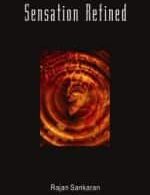During a congress in Rome in 1982, a little known Argentinean gave an extramural conference in the evening. I thought, why not attend?
The room was half full and a tall proud man talked to us moving slowly around at a kind of military pace. In a measured and decided way he explained that homeopathy was stagnating; every homeopath creates his own school. The one says that disease is exogenous the other says it is endogenous.
Hahnemann tells us it is due to a suppressed eruption (Psora due to a suppressed mite) and that we should not have any theories (if there is no memory of a suppressed eruption, he decides there must have been one). Hahnemann contradicts himself in the same book: treatment of Scarlatina by using Belladonna, Thuya or Medorrhinum for warts, and then writes at the same time that we cannot treat a disease entity in itself but only what is unique, original, singular in the patient. But surely this is what is specific to homeopathy: to address in a patient what is expressed in a unique and personal way by the defective vital force.
And all homeopaths call themselves Hahnemannian. The tragedy is that Hahnemann taken literally, did say all this in the Organon and Chronic diseases.
To get away from the literal interpretation of Hahnemann, Masi undertook a critical exploration of the Minor Writings, of Hahnemann’s view on man and man’s place and purpose in creation. He has invited us to study the healthy in order to diagnose “what is not logic” in pathologic.
Do pathogeneses and patients conjure up a typical human metaphysical problem or only biological issues? But biological issues only deal with reproduction of a species.
He explains the 5 nuclei of suffering: the loss, culpability, fear of chastisement, nostalgia, justification, the five rubrics under which we can classify the symptoms of a pathogenesis and therefore also the symptoms of the patient .
The view from a distance on Hahnemann’s writings helped Masi to understand the logic in the contradiction in the Organon and the Chronic diseases: they are due to the limits in knowledge at his time (matter/energy, nosology/dynamic disease). They are also due to the fact that Hahnemann enclosed within his writings, his understanding all through his evolution, without explaining this evolution to the reader. His anthropologic research takes Masi to a dynamic vision of the profound human suffering (like ill adapted spectacles that present us with a blurred vision of reality) against which we all protect or defend ourselves through retreat, destruction or confrontation. The miasms, originally of nosologic origin, psora (gall), syphilis (chancre) and sycosis (condylomas) become attitudes of reaction (logic) to suffering (pathologic).
This leads to the miasmatic dynamic in terms that cause no confusion: suffering, lysis (hetero, ego) and egotrophy with the various nuances.
When Masi introduces an anthroposophist vision in agreement with Hahnemann, there is a need to accept the notion of a dual composition (inseparable unity of two components: body and spirit) of man, a duality difficult to comprehend due to a limited biology which has to bear a mind with infinite possibilities.
These are the main things I learned at the conference in Rome:
– The disputes between schools have no foundation if we are prepared to take a wider view of Hahnemann’s writings, without the need to deny any content.
– The concept of chronic diseases and their dynamics is fully comprehensive and logical if one is prepared to step away from the nosology views of the beginning of homeopathy
– The study of the patient with his sensations, reactions and then lesions, is the same as the study of the Materia Medica (but not of the repertory and drug pictures)
– At the end of a day of consultations, I am now much happier and less tired by my work than before, because I have renounced the need to save everyonel with a medicine so much better than orthodox medicine. I now know that homeopathy is only at its infant stage, has so much progress to make, so many substances to prove, patients to understand, and I accept that each therapeutic has its own place and time.
To resume, one evening with the Argentinean has thrown a positive light on my dissatisfaction with the too mechanical Kentist and literal homeopathy. I gave Lycopodium and it worked and I did not know why. I gave Lycopodium again and it did not work and I did now know why either!
The practitioner is searching for the common ground behind the problems in life, to touch something particular in the patient, so as to discover in the remedy. As a consequence, the consultation is more alive and more vibrant and becomes more therapeutic in itself, even without prescription.
Another thing that struck me about Masi was his patience. I never once saw him become annoyed by a silly question, to which I thought he had already responded three times. Each time the return to a previous theme opened up something new to me that I had missed the previous time.
He was also always ready to stand up to any who pretended to be Hahnemanian based on part of his writings, without an understanding of the miasmatic dynamism.
His purpose was to teach his method and not to show the truthfulness of such and such of his conclusions on remedies, and to give us leads and shortcuts. We were given an instrument of research and progress for homeopathy and for our practice. This approach explains the lack of students. There were also those who were deceived into thinking that the anthropological approach was too far-fetched, useless or esoteric before they understood that it was indispensable!
He taught us how to make a fishing rod to become independent of him, and also of other schools and theories, which are often stuck in one or other of the aphorisms of the Organon. He gave us the instruction manual of the perfect explorer, an explorer of the language of the patient, of remedy substances, of botanicals, mineralogy and symbols.
Being a believer like Hahnemann, he taught us to work using a teleological vision of the patient and his symptoms. We cannot fight the finalities of man; we have to help them to succeed.
Now that Masi has given to his children a tool for dynamic research and comprehension, we have to make sure there are many of us motivated enough to follow this path!
——————————————
Dr. Guy Loutan
MD-homeopath in Geneve-Thoneux, Switzerland




